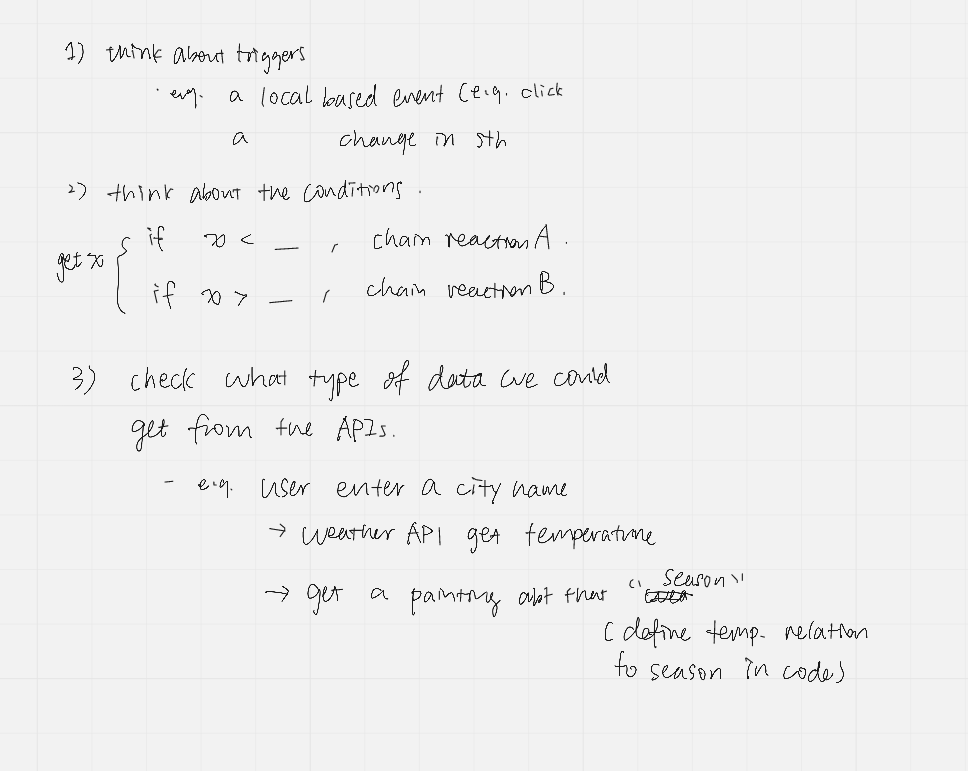Brief
The Web was built around the concept of requests and responses - a constant back and forth between a server on the Internet and a browser on your computer. As it grew and expanded the need arose to get exchange going not just between a person and a machine but among many machines.
A user initiates a single action - a click of a button, a text entry, a page scroll - and the browser triggers a chain of events, most of them hidden behind the veil of the Cloud, to pass around some data from one server to another, like a ball in a pinball machine. The data can be used to request other data, to trigger different responses from servers, to capture more data. It can be formatted, rearranged, displayed in different contexts, - juxtaposed with other data.
In the spirit of Rube Goldberg's fascination with the mechanism over the end result - how can we build similar systems in the digital realm? What kind of data could be passed around? With services could be chained together to produce some unexpected outcomes? What would the triggers look like - and the end results? None of those need to be practical, efficient or even reasonable - the focus is on the celebration of the chains of events and the mechanisms that enable them.
The Code
You can find HTML and CSS on Github repo here.

Found in Translation
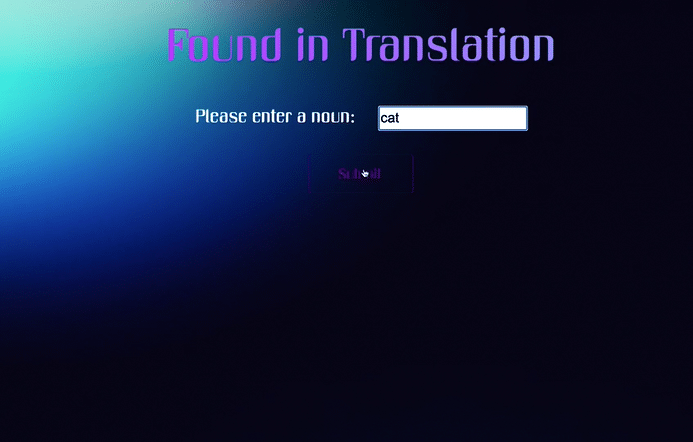
Link to website here.
Process
API List
Instructions
- User Enters Noun
- Then Met Museum Generates a List of Art work ID’s related
- Image is saved, then API uses text from artwork to generate another Image
- Text to New York Times article
- Then related food recipe is created using Article title
Team: Alan Amaya, Mario Santanilla, Yue Xi
PROJECT 2:
MULTIPLAYER MANUFACTURING ONLINE SITTING ARENA (MIMOSA?)
Brief
After World War I, many artists, writers, and creative intellectuals started to question every aspect of their culture that had allowed the horrors of war to occur. Artists started to think about how technology, consumerism, art, and politics were all interrelated. Romanian-French poet Tristan Tzara noted, "The beginnings of Dada were not the beginnings of art, but of disgust." Artists and writers such as Tzara, Hugo Ball, Man Ray, Hannah Höch, and Max Ernst decided that the only way to respond to these realizations was through irreverent and (potentially) nonsensical works. Dada artists used techniques such as collage, assemblage, and photomontage to form their works, creating new linguistic and visual languages that attempted to exist outside the rigid structures of contemporary society. By incorporating found materials into their work, creatives began to break down the distinctions between art and real-life by demonstrating that art is always produced from real life.
Today, we are feeling similar extremes of horror, disgust, and utter confusion. How might our contemporary observations of technology, consumerism, art, and politics manifest into a formal reaction and creative proposition?
Task
Make a mixed-reality chair (a combination of a real and digital chair) by using the technique and concept of assembling, a three-dimensional alternative to collage, a technique of composing work by combining various found models, and online materials not normally associated with one another. Through this process, we will explore new forms of mashed-manufacturing and avatar/human-factors in design.
Renderings




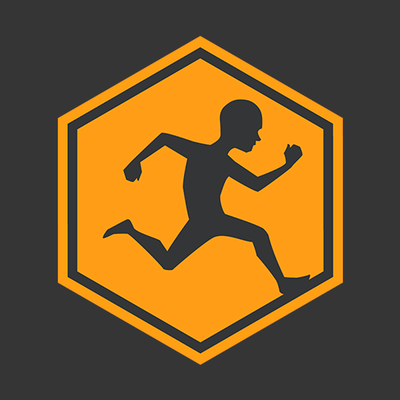
Photogrametry

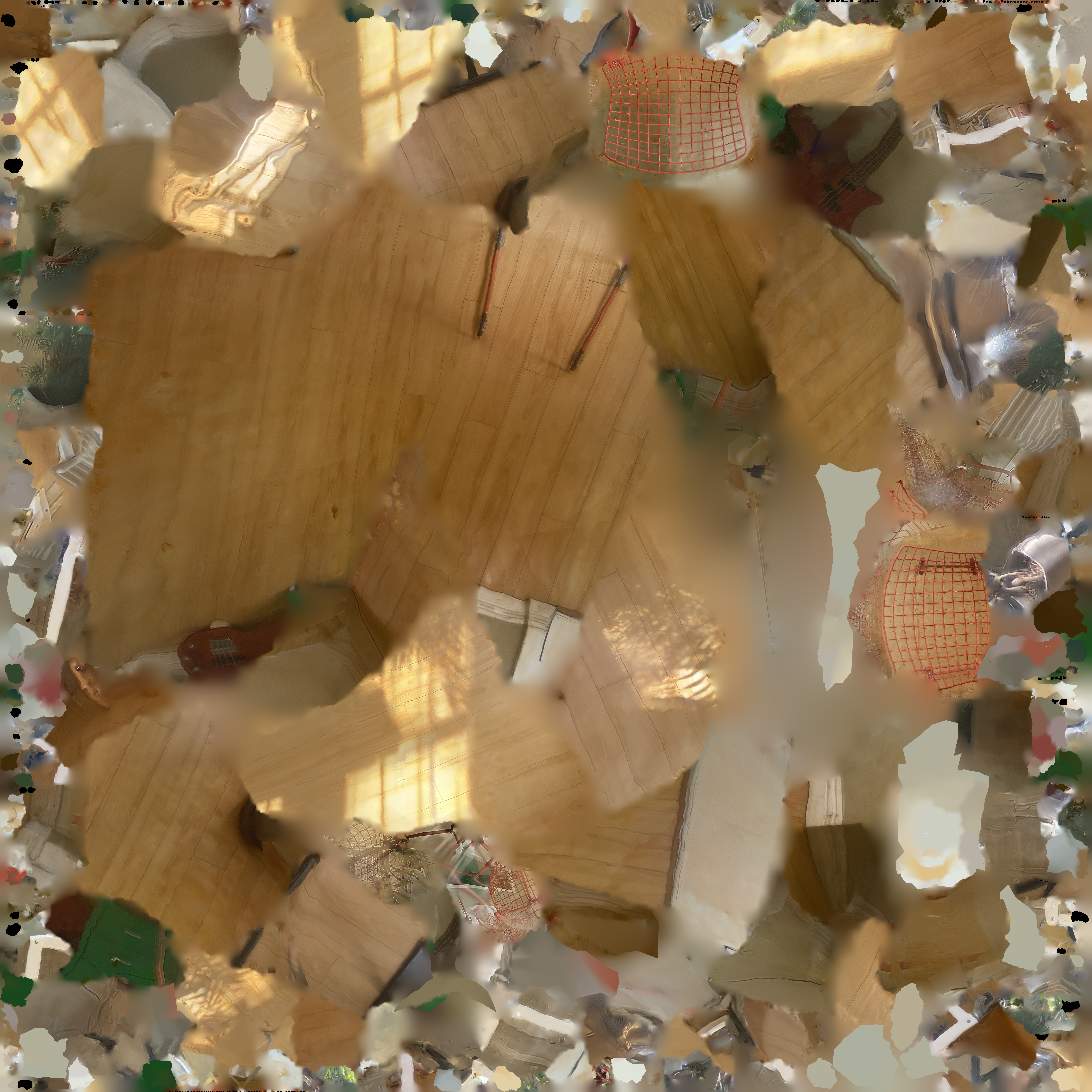
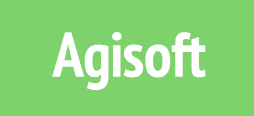
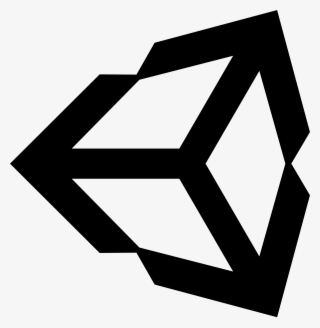
PROJECT 3:
DIGITAL TWINS
Brief
You will work in teams of 3-4 for the next 3 weeks to create a digital twin model(s) using one another as your datasets and various machine learning software examples below. Using yourselves as a medium, how can you use machine learning to extend one another's attributes, mix, mash, and collaborate and formulate new in-between aesthetics from these various processes?
Together we will:
- Look under the hood of AI and understand how it is built conceptually;
- Learn to collect and label data, use it to train a model to witness how the process works and what can go wrong with it;
- Explore how AI can be used for the purpose of visual creative expression.
HAQ ML
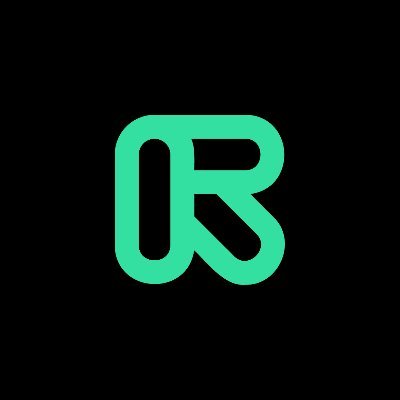



Team: Alan Amaya, Hongming Li, Qianyue Yuwen
PROJECT 4:
PERSONAL PROJECT
Brief
An integral part of working with contemporary technology is the capacity for continuous learning and self-guided exploration. Tools - applications, programming languages, frameworks and platforms - change continuously. It is important for a design practitioner to be able to identify areas of interest and paths for exploration within those ares; to be able to learn new tools and skills while maintaining a personal perspective and deliver compelling outcomes.
This project invites you to ask radical questions about your creative practice - what media do you want to work in? what tools do you like to use and why? what skills would you like to learn or hone and for what purpose? The ultimate goal is to help you discover your own set of preferences in the realm of creative technology and potentially test the waters for a large, in-depth exploration you might pursue as part of your thesis project.
Start with the tools and technologies you find interesting, promising, compelling - in so many words, cool. How would you apply them, what would you like to create given a free reign? Limit yourself to one set of tools or one medium (Machine Learning, or Mediated Realities, or the Internet of Things, etc.). Clearly define your toolset and the goals you'd like to achieve in the scope of three weeks. Find some resources - documentations, tutorials, communities of practice - to help you with your experimentation. Make something.
Project Statement
I was interested in using this opportunity to develop my own process of distoring and reinterpreting moving images like in a Stan Brakhage kind of way. How can the process Brakhage used be interpreted with the technologies that are available today? My process ended up being a mix of databending, datamoshing, video editing, and analog distortion. Datamoshing is a technique of damaging video clips to create a glitch effect. The technique is conducted by removing I-frames, an independent frame containing digital data examined by the compressor to display that frame, and replacing them with P-frames, (Predicted picture) which hold data changes from the previous frame. Databending is the process of manipulating a media file of a certain format, using software designed to edit fiels of another format. The footage I chose to distort is of Vessel (2021), a short film I made that was processed through an analog video synthesizer during a workshop with JJ Stratford.
Process
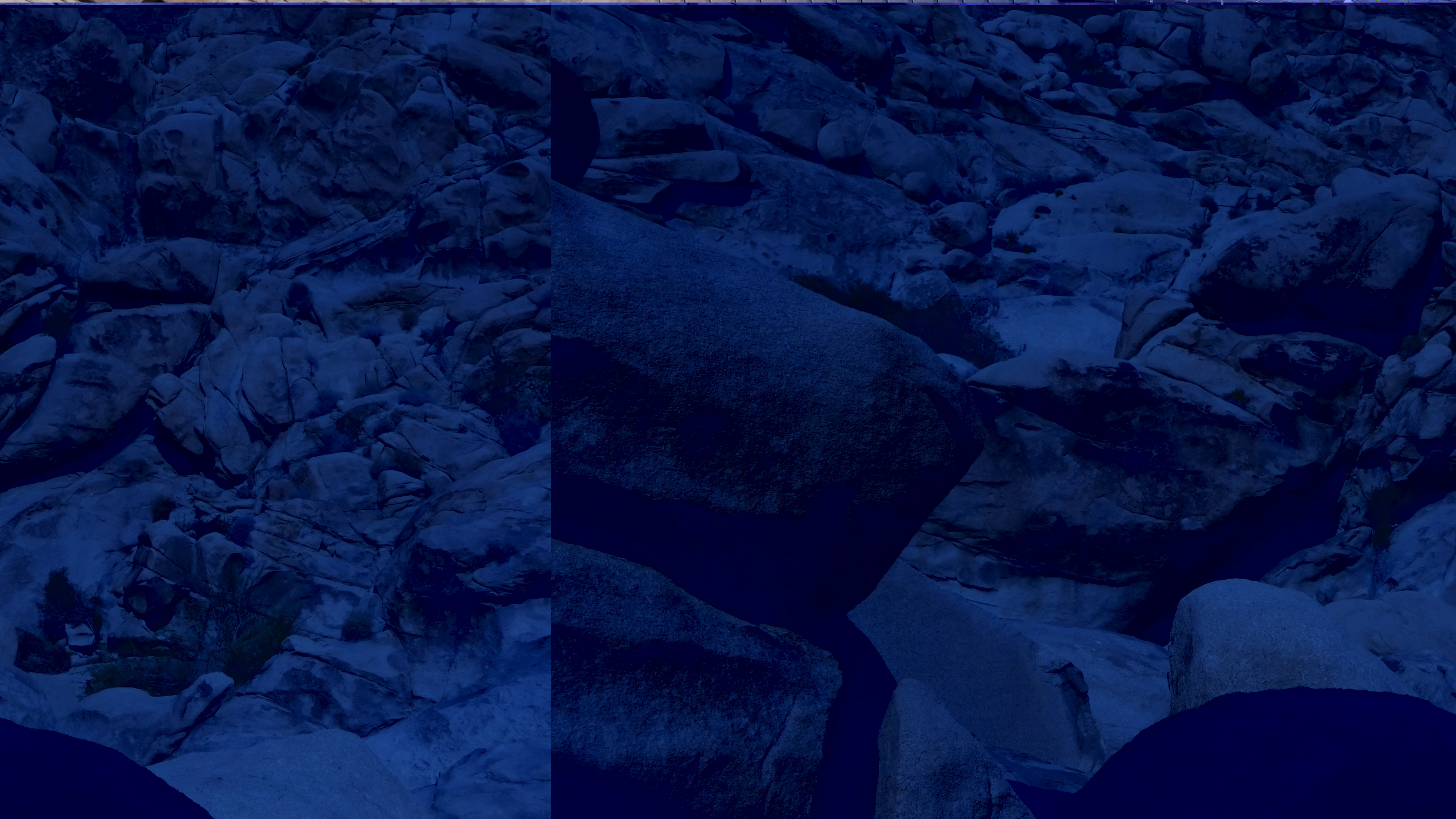
Method: Testing using Text editor
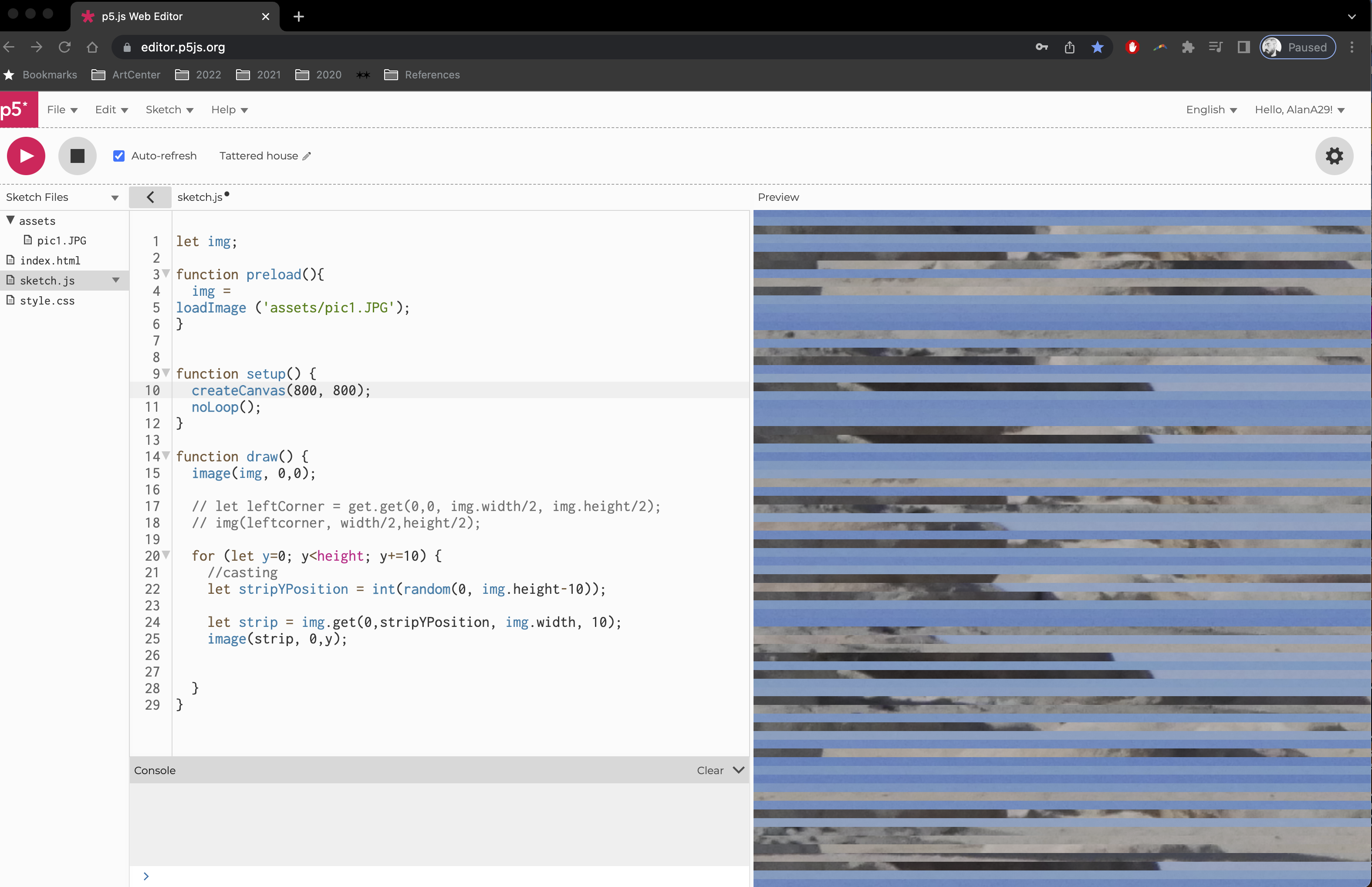
Method: Testing using p5.js




